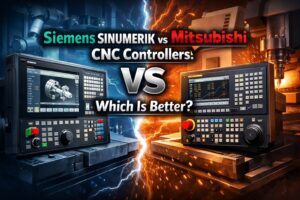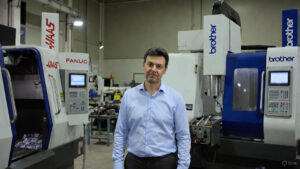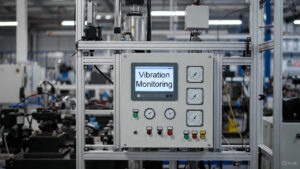A Brief Overview of CNC Machines
CNC (Computer Numerical Control) machines are automated systems used in manufacturing for precisely controlling machining tools using computer programming. They are critical in industries such as aerospace, automotive, and metallurgy, where precision, consistency, and efficiency are required. CNC machines can carry out tasks like milling, drilling, cutting, and turning with unparalleled precision, allowing manufacturers to simplify production and decrease errors.
Choosing an accurate CNC machine is essential for firms that want to maximize output, cut costs, and maintain high-quality standards. The improper choice could result in downtime, inefficiencies, and increased expenses.
What is a CNC Machine?
Basic Components and Functions of a CNC Machine and IoT Gateway Integration
Basic Components of a CNC Machine
Control Unit
The part of the CNC machine that functions as its brain, turning software commands into movements, provides accurate tools, speed, and operation control.
Spindle
The rotating mechanism that does operations like milling, drilling, and cutting is what holds and spins the cutting tools.
Machine Bed and Frame
The strong base fixes and reduces vibrations for accurate cutting while supporting the entire machine.
Machine Bed and Frame
The strong base fixes and reduces vibrations for accurate cutting while supporting the entire machine.
Features of CNC Machine Integration with IoT Gateways
The number of connected IoT integrations is expected to double over the next seven years.
Real-Time Data Monitoring
IoT gateways collect and transfer data in real-time from CNC machines. Better decision-making is made possible by the monitoring of important parameters such as spindle speed, tool wear, energy consumption, and output rates.
Remote Control and Monitoring
Operators may monitor and control CNC machines remotely via linked devices due to IoT connectivity. It allows for control, solving problems, and quick fixes even when not on-site.
Predictive Maintenance
IoT gateways can forecast when a machine is going to break down or need fixing by looking at data trends. As an outcome, there is less downtime and a risk of unplanned breakdowns.
The Positive Aspects of an Integrated IoT Gateway and CNC Machine
Data-Driven Decisions
IoT gateways collect and analyze enormous volumes of data, which can provide useful insights and lead to ongoing manufacturing process improvements.
Cost Savings
By reducing unplanned downtime and resource waste, predictive maintenance and optimized production lower operating expenses.
Increased Efficiency
Streamlining operations with automation and real-time monitoring reduces idle times and boosts productivity.
Consider the Key Factors While Choosing a CNC Machine

CAD/CAM Software
Nature of Control
Types of Motor Drives
Spindle Speed and Control
Stability and Rigidity
The precision of the machine is highly dependent on its build quality. Vibrations are lessened by a strong, well-constructed frame, leading to more precise cuts. Inconsistencies may come from machines with insufficient rigidity, especially in high-speed operations.
IIoT Gateway-Based CNC Machine Analysis and Advantages
OEE Calculation
Manufacturers get numerous advantages by integrating IoT to OEE within their industry shopfloor. By calculating OEE and determining the particular loss behind the decrease in effectiveness, an industrial IoT solution transforms streams of sensor data into real-time insights about equipment efficiency.
Furthermore to the ability to enhance industrial functioning, IIoT solutions also improve OEE values in several ways, such as by monitoring performance data for improved scheduling, planning, and energy use.





